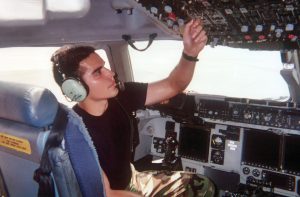
Figure 1. Need a talk on sequencing? Roger that! (Luis Robles Garcia, mid-2000s,USAF).
For those of us trained in human genetics, we know that pretty much any trait or disease has a heritable component. Yet, no matter how big, we also know heritability (additive genetics) is only part of story. The environment, alone and in combination or interaction with genetics, and gene-gene interactions also affect phenotypes. It’s complex, to say the least (PMC5860428).
While many of us acknowledge the importance of environmental exposures when studying phenotypes, relatively few of us publish genetic association studies that include environmental or exposure variables. Compared with genetic data, accurate environmental data is difficult to collect on an individual-level basis at the appropriate time (across the life course and before disease) on tens of thousands to hundreds of thousands of participants. Most environmental data available for study, in fact, are self-reported data collected via surveys, which can be problematic accuracy-wise, to say the least. To boot, everyone seems to use different survey instruments, making pooled and meta-analyses oh-so-difficult no matter how hard you try to harmonize (am I right, PhenX?). But, something’s got to be done because we are missing very important data related to human health and traits.
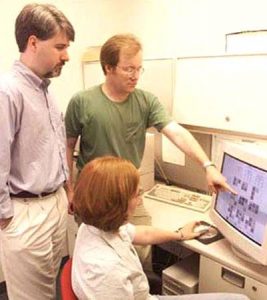
Figure 2. Marylyn Ritchie (seated), serving up interaction statistcal methods since 2001. With PhD advisor Dr. Jason Moore (left) and staff scientist Lance Hahn (Vanderbilt University).
As I have already written, planning for new cohorts today requires substantial thought towards new ways of environmental data collection at the individual level as well as the more expansive community (however you define this) level. Recent examples include the NIH All of Us Program, which is proposing a mixture of traditional survey instruments (administered online) and newer wearable technologies. Another group thinking about this is the Air Force (Figure 1). The Air Force Medical Service (AFMS), to be more precise.
This may seem from out of the wild blue yonder, as the AFMS is not the first military organization that comes to mind when I think of precision medicine or research in general. What comes to my mind is more like the Veterans Administration Million Veteran Program. So, what is the AFMS doing research-wise in this space?
Total exposure health (TEH), as they call it.
AFMS created TEH in 2015 as a program to collect exposures, some in real time, with the goal of preventing injury and/or disease. The focus of TEH is first for those on active duty but with plans to extend research findings and prevention strategies to veterans and the general population. An early example of TEH in research action is the Moody Hearing Study, a recent study of noise exposure that collected round-the-clock data in real-time using a small collar microphone and a smart phone to capture the data. Two important observations were made according to their press release. First, noise levels above a certain threshold were recorded at work and outside of work, highlighting the fact that the collection of occupational exposures alone is not sufficient to characterize a person’s exposure and risk. Second, the real-time collection and feedback of noise levels altered the behavior of active duty personnel in the moment the data were captured and displayed. Real-time prevention, thank you very much.
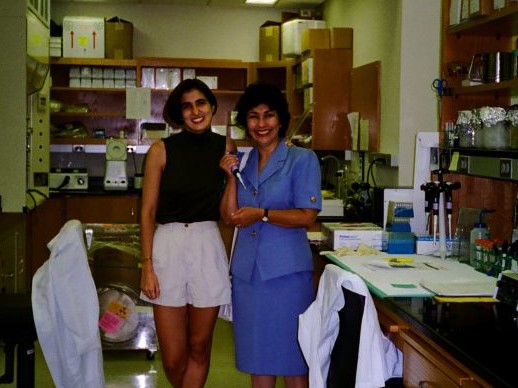
Figure 3. Showing Mom how to pipette samples before we PCR them, sequence them, and throw them on the ol’ ABI Stretch 373A (Emory University, 1997).
Great, but what does all of this have to do with genetics? Glad you asked, as I certainly didn’t know.
It turned out that AFMS is interested in the intersection of TEH (individual-level prevention) and precision medicine (individual-level treatment). And born from this interest was the 2018 TEH Conference, a two-day event in collaboration with Pacific Northwest National Laboratory that brought together experts in toxicology, exposure science, and precision medicine research from academia, industry, government, National Laboratories, and the US military. For the category of precision medicine, TEH organizers invited Dr. Michael Gaziano, director of the aforementioned Million Veteran Program, as plenary speaker and chair of the Advances in Precision Medicine session. They also invited Dr. Marylyn Ritchie, queen of genetic interaction studies (Figure 2), among others. I was also part of this session as a speaker. Marylyn, as it turns out, is the reason I got this speaking gig. The organizers asked her if she knew anyone who could cover sequencing technologies. Apparently she said yep, and the next thing you know, I got a nice email and fancy letter asking me to speak. On sequencing technologies.
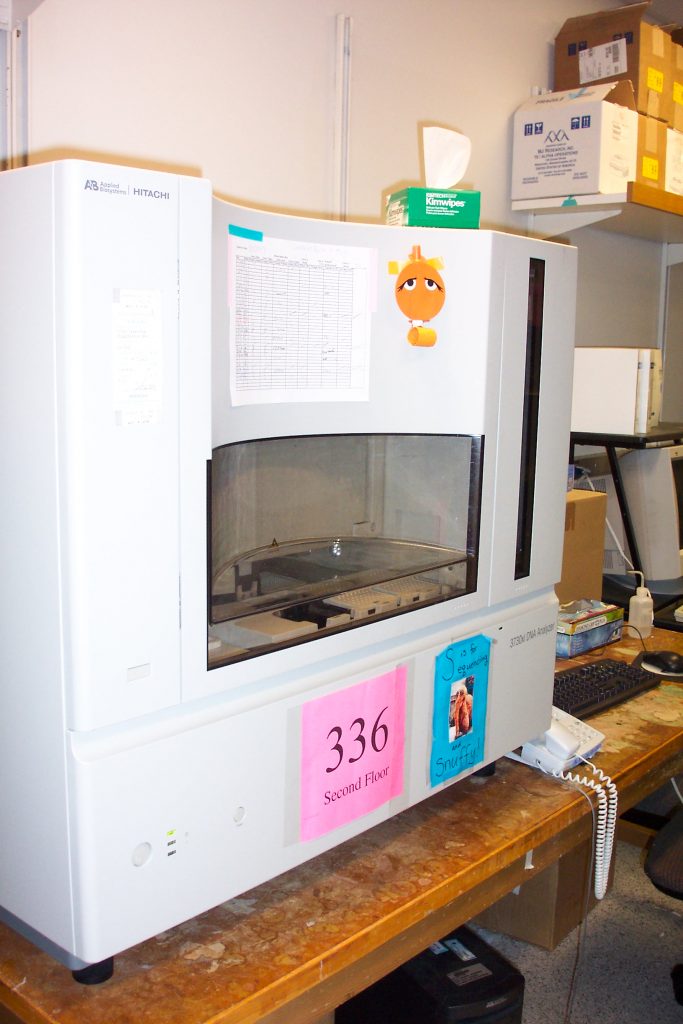
Figure 4. Sunny days, sweepin’ the clouds away…on my way to where the air is sweet. Can you tell me how to get? How to get to Genome Sciences Street? All ABI 3730 machines in the Nickerson lab were named after Sesame Street characters. Pictured here is Mr. Snuffleupagus (Snuffy), a real sequencer that everyone could see (2006).
Oh, boy.
So, yeah, technically I could give a talk on sequencing technologies, but do these people know how fast things change? I mean, I trained on an ABI Stretch 373A in graduate school (Figure 3) and then a 3730 as a post-doctoral fellow in Genome Sciences at the University of Washington (Figure 4). Soon after I left Seattle for my first faculty position, everything changed with “next-generation” sequencing technologies. And, now that’s old technology! Wait—that’s it! That’s my talk!
I am happy to report that I was able to put together a short history of sequencing along with some brief commentaries on the challenges of current strategies, including variant annotation, storage, and analysis. Fortunately, I was the first to speak in the session that morning followed later by Marylyn (Figures 5 and 6). The early morning slot was ideal as the audience was fresh and seemed pretty excited. And why shouldn’t they be—genetics is cool!
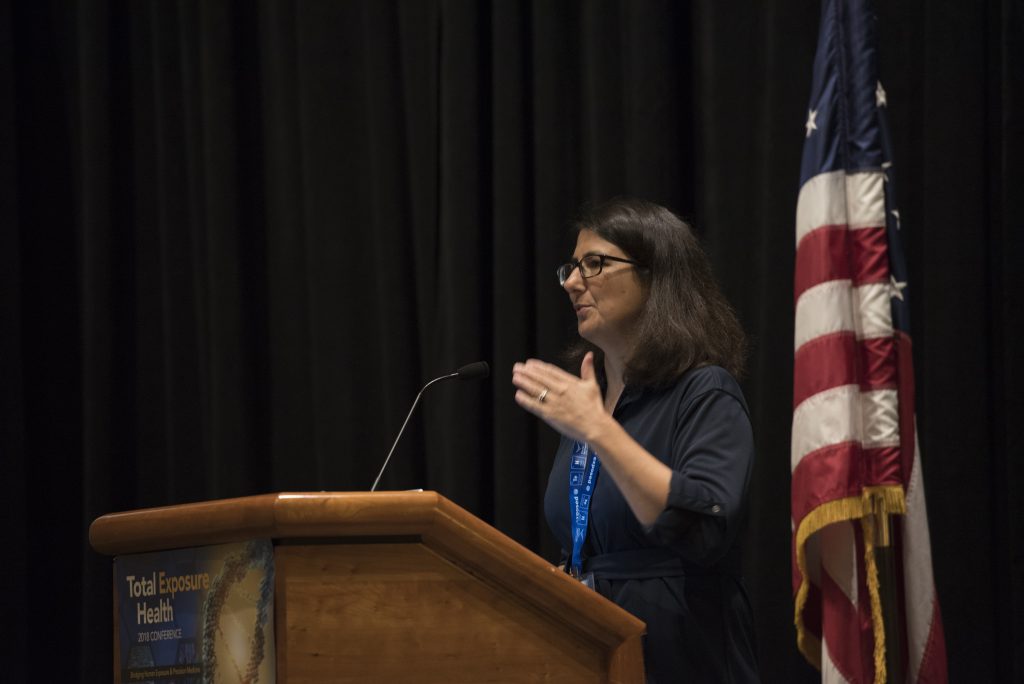
Figure 5. Dr. Dana Crawford waving through the history of sequencing at the Total Exposure Health Conference (2018).
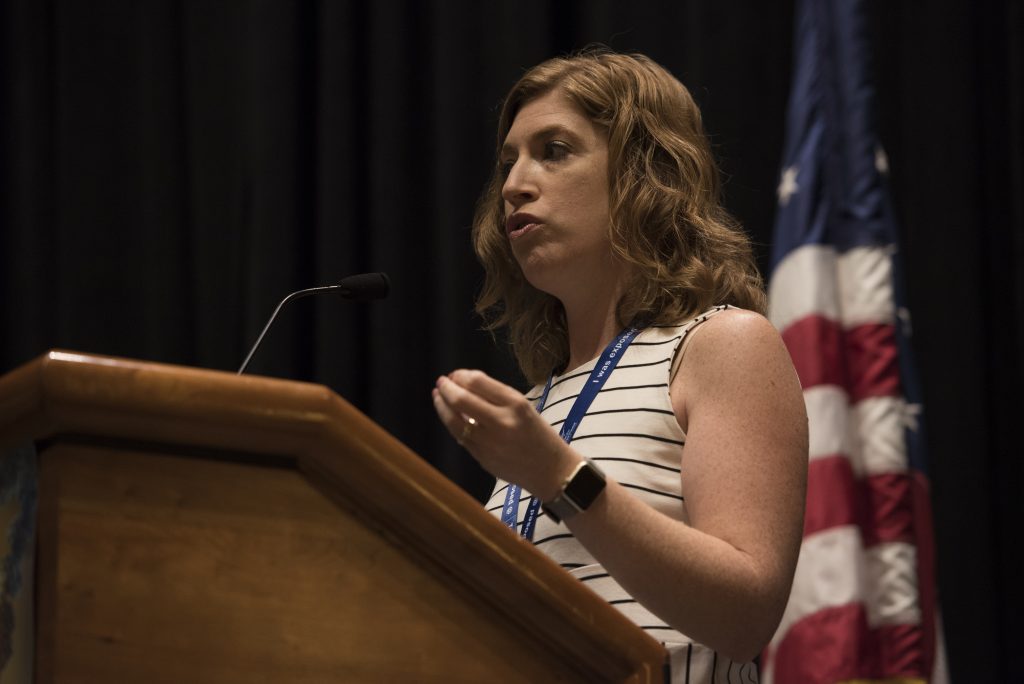
Figure 6. Dr. Marylyn Ritchie showing you how much she thinks genes and the environment are important at the Total Health Exposure Conference (2018).
The TEH Conference as a whole was pretty interesting from an outsider’s perspective given the unique mix of investigators. Besides the scientific sessions covering toxicology, bioethics, precision medicine, exposure science and environmental health, there was a poster session complete with students working on innovative wearable data collection strategies. I talked to one student who used a special collar to measure indoor exposures for a project related to cats and the development of hyperthyroidism. I had no idea that hyperthyroidism was a relatively recent disease observed in cats that could be associated with exposure to flame retardants (polybrominated diphenyl ethers or PBDEs) or other chemicals common in carpet and furniture (e.g., PMC5415813). If they keep this up, AFMS will be able to offer TEH to active duty personnel, veterans, civilians, and their four-legged friends.
Now that’s the cat’s meow (Figure 7)!
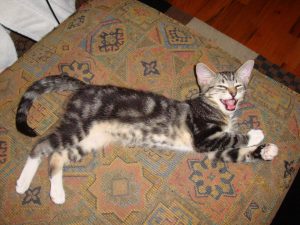
Figure 7. Oh, Bosco. You little gremlin, you (2009).
